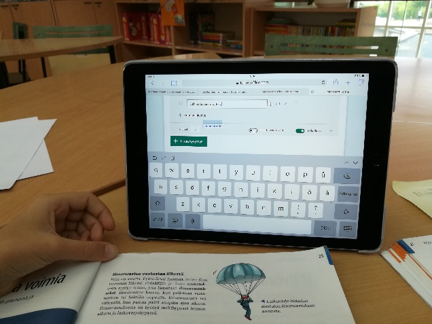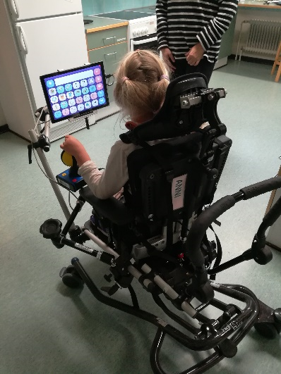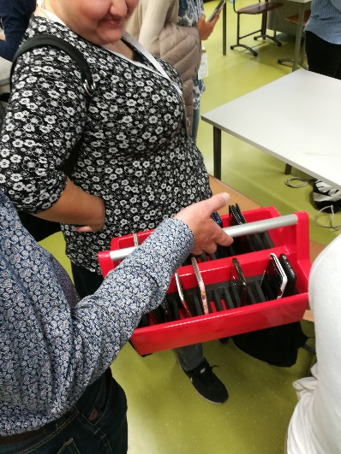Media Literacy Week in Finland – Empowerment through education, not censorship
 In our last week’s blog, we told you about the annual February campaign called Newspaper Week. Newspaper Week is followed by Media Literacy Week, which is, in fact, the Finnish extended version of Safer Internet Day celebrated worldwide on February 11th.
In our last week’s blog, we told you about the annual February campaign called Newspaper Week. Newspaper Week is followed by Media Literacy Week, which is, in fact, the Finnish extended version of Safer Internet Day celebrated worldwide on February 11th.
The aim of Media Literacy Week is to advance the media literacy skills of children and young people as well as to support professional educators (such as early childhood educators, teachers, librarians and youth workers), guardians and the general public in their important media education tasks.
The Finnish Media Literacy School platform promotes awareness of the importance of media education and supports numerous activities from events to publishing educational materials. Media Literacy Week is celebrated, for example, in seminars, workshops, webinars and public discussions. Most importantly, Media Literacy Week encourages local institutions (such as schools, libraries, youth work centers, museums and kindergartens) to arrange educational events during the campaign week. Media Literacy Week addresses a broad scope of themes and topics including, for instance, cyberbullying, print and digital media, visual culture, multimodal learning, media production and so on.
Why talking about media literacy is topical? Whether we call our times the Digital Era or the Information Age or the New Media Age, we certainly mean that the ways people communicate, consume or produce information contents have changed over a couple of last decades. The definition of literacy is changing, because more and more human activities engage new technologies and new technologies require new literacies to fully access their potential. It is for this reason that media literacy has become a part of the multiliteracy competence formulated in the Finnish core curricula of education of all levels. Media education in Finland aims to make learners, professional communities and other stakeholders think about the media through the consequences of their choices and actions, through seeing the media as both a means of learning and a useful learning environment.

It is curious that in the light of the recently recognized downsides of the media age, some countries have considered limiting or even banning the use of smart devices in the educational process. There are two sides to a matter though. On the one hand, raising societal awareness of the risks and of other challenges like dependence on devices is a necessary and right action. The rules of the use of, for instance, mobile phones in the classroom should be clearly formulated and complied with. On the other hand, teaching media and digital literacy skills is exactly what can help learners develop a healthy and balanced relationship with the digital world and learn an inquisitive and creative approach towards the media. Active restriction and censorship are likely to have a counterproductive effect in the long run.
Teaching basic computer skills as well as promoting a responsible and safe manner on the Internet and other connected environments have become the imperatives of the 21st century. Also, it is important to guide learners to understand and appreciate what opportunities different types of information resources offer. For instance, various combinations of audio, images, animations, video and interactive content allow for new ways of participation, active learning, active citizenship, as well as of identity and community building.
 |
 |
It is equally important to equip young generations with the knowledge and skills needed to work with the increasing volume of information – to find it, to extract it, to decompose it, to interpret it, to analyze it, to critically evaluate it, to create and re-create it, to present it in different formats and on different platforms, to broadcast it through different channels, to save it for future use, to establish effective feedback channels and so on.

Today’s media does not simply restrict itself to conveying information but aims to provoke an emotional response and thereby to influence one’s perceptions and ultimately behavior. So, in this perspective, the task of media education is to explore the aspects of emotional agility vital to the overall well-being of the learners. For instance, why not to ponder in the class about how, say, commercials or excessive gameplay make one feel, what is causing what we might call a ‘red-flag’ feeling, how to control impulses while interacting with the media, and what could be the strategies to have a balanced routine flow.
No matter in what direction the definition of media literacy is stretched, it remains essentially related to what is called foundational literacy—the ability of reading, understanding and meaning-making. Foundational skills are the building blocks upon which other skills and literacies can develop. There is no such thing as “digital natives”; young generations do not have the innate digital intelligence or the maturity to think about the media. Nor do they learn how to read, understand and make meaning of the media by themselves. A conscious, systematic and collaborative effort is required to guide and assist learners of all ages towards a constructive consumption and production of the media.

Elena Chukhlantseva
ECEC Specialist
